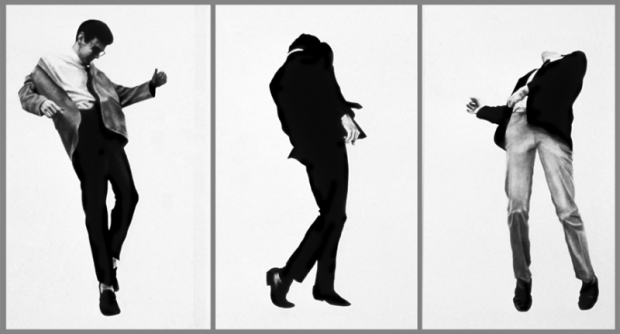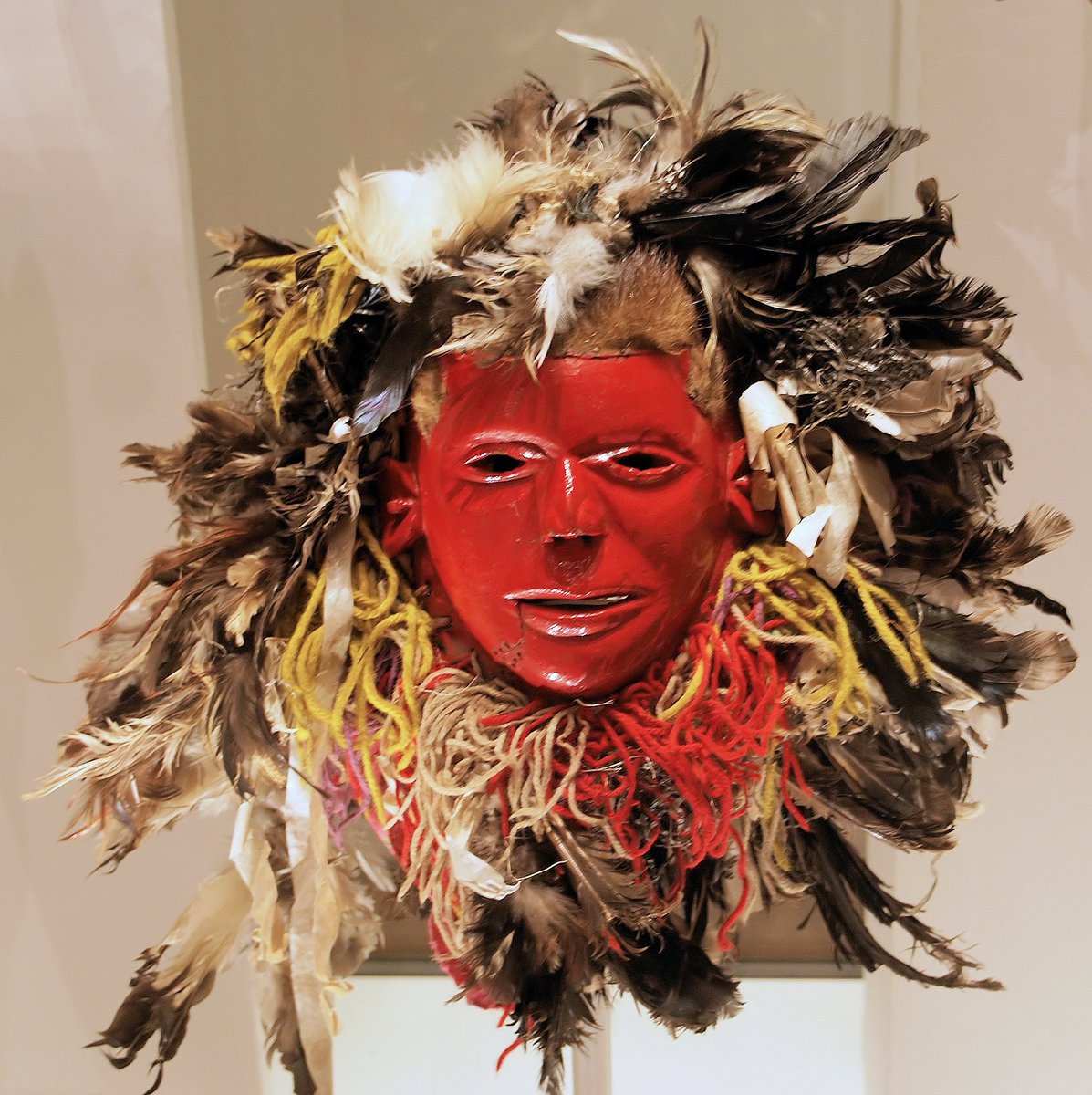Students work
Statement of Inquiry
# Art has the power to change the way a viewer thinks and acts.
Unit: Taking a Stand, Grade 6-8,
Title: Exploration to Develop; Medium: soft pastel, acrylic, tissue paper, jute on canvas;
Size: 121.92 x 182.88 cm.
Unit: Taking a Stand, Grade 6-8,
Title: Exploration to Develop; Medium: soft pastel, acrylic, colour paper, rope on canvas;
Size: 91.44 x 182.88 cm.
- Commonality, diversity, and interconnection.
Statement of Inquiry
Creative expression is about exploring artistic boundaries in order to develop innovative solutions.
Unit: Seeing Into, Grade 8,
Global Context: Personal and cultural expression.
Statement of Inquiry
# Employing non-literal forms of expression can lead to the discovery and generation of new knowledge.
Mixed media Mask (Gr 6-8 student work):
Ceramic Mask (Gr 6-8 student work):
Unit: Behind the Mask, Grade 6-8,
Exploration to Develop:
- Identity formation, self-esteem, status, roles, and role models. Focused on African mask culture.
Broken House on Ceramics:
Ceramic Bowl:
Ceramic Tile
Pinch Pot Ceramic Elephants:
Goal: Students will learn ceramic techniques, including shaping, molding, glazing, and firing. By the end, they'll apply these skills to create unique ceramic pieces, showcasing their talent and creativity.
Watercolour experiment:
Watercolour experiment:
Students from Grade 6-10
Relief Arts:
Goal: Demonstrate the skills and techniques to create, perform, and present art to build the sculpture. At the end of the learning, students will be able to apply the talent in the subject area. Building a sculpture will be learning innovative skills with pleasure.
Grade 6 students will explore how space plays a part in aesthetics in composition, creating a design, and fine art. How the element takes space is portrayed as positive and negative. Different techniques for creating negative and positive space, Notan Design, transfer, repeat, and compose the drawing, observational drawing skills, drawing skills pertaining to simple shape and outlines, such as silhouettes, using observation techniques from leaf activity.

Grade 6, Students will explore how space plays a part in aesthetics in composition, creating a design, and fine art. How the element takes space is portrayed as positive and negative. Different techniques for creating negative and positive space, Notan Design, transfer, repeat, and compose the drawing, observational drawing skills, drawing skills pertaining to simple shape and outlines, such as silhouettes, using observation techniques from leaf activity and studies artist Robert Longo’s artwork style. They will learn to write, exhibition text, artist statement, I see think wonder, read-scan article, critique self-other, note taken from video, visual art vocabulary-find definition, and research for knowledge. The students will learn these skills through the unit, and for the summative task, they will choose a method to create their negative and positive space, showing Dance or Escape movement with the story behind.
Notan Design
Behind The Mask: MYP1


Learn skills and techniques: Mask making with cardboard, paper mache & clay.

Purpose of the mask: Malawian 'Guru waMkulu' Mask & Korean 'Hahoetal' Mask & Inca 'Gold Sun' Mask
Self-Identity Portrait
How to Create a Conceptual Acrylic Painting
In this video, I demonstrate how to begin a conceptual acrylic painting by creating the first layer using carefully chosen colors. Once the first layer is complete, you can apply additional layers using the same or similar colors to build depth and texture. After finishing the background, I draw a human figure on top—but intentionally leave parts of the figure incomplete to create space for the viewer’s interpretation. Watch and enjoy the process of creating a thoughtful, layered artwork.
Cultural trend of using brand products:
Printmaking art following the Folk art theme
Installation art using origami and colored paper:
Self-Identity Art Project: Grade 6
Goal: Demonstrate the skills and techniques to create, perform, and present art using watercolor. At the end of the learning, students will be able to apply the talent in the subject area. Watercolor techniques will be learning innovative skills with pleasure.
Relief Arts:
Goal: Demonstrate the skills and techniques to create, perform, and present art using relief techniques. At the end of the learning, students will be able to apply the talent in the subject area. Relief techniques will involve learning innovative skills with pleasure.
Sculpture:
Goal: Demonstrate the skills and techniques to create, perform, and present art to build the sculpture. At the end of the learning, students will be able to apply the talent in the subject area. Building a sculpture will be learning innovative skills with pleasure.
Symbol Portrait
Artwork concept and method description: The 13-year-old Arts students
began how artists use symbolism to express themselves. Guided by the key
concept of Communication, the students used objects to create symbolic
portraits. Using digital tools, they added an element of movement to their
works and considered transitions through imagery in order to add another layer
of meaning. In order to complete this artwork, students developed painting and
drawing skills, including mixing colors, underpainting with acrylic paints, and
layering media.
Positive & Negative Space Art ActivityGrade 6 students will explore how space plays a part in aesthetics in composition, creating a design, and fine art. How the element takes space is portrayed as positive and negative. Different techniques for creating negative and positive space, Notan Design, transfer, repeat, and compose the drawing, observational drawing skills, drawing skills pertaining to simple shape and outlines, such as silhouettes, using observation techniques from leaf activity.

Grade 6, Students will explore how space plays a part in aesthetics in composition, creating a design, and fine art. How the element takes space is portrayed as positive and negative. Different techniques for creating negative and positive space, Notan Design, transfer, repeat, and compose the drawing, observational drawing skills, drawing skills pertaining to simple shape and outlines, such as silhouettes, using observation techniques from leaf activity and studies artist Robert Longo’s artwork style. They will learn to write, exhibition text, artist statement, I see think wonder, read-scan article, critique self-other, note taken from video, visual art vocabulary-find definition, and research for knowledge. The students will learn these skills through the unit, and for the summative task, they will choose a method to create their negative and positive space, showing Dance or Escape movement with the story behind.
Notan Design
Grade 6, students will explore using positive-negative space on art.
Behind The Mask: MYP1
Learn skills and techniques: Mask making with cardboard, paper mache & clay.

Purpose of the mask: Malawian 'Guru waMkulu' Mask & Korean 'Hahoetal' Mask & Inca 'Gold Sun' Mask
Students will explore masks from different cultures: the Malawian 'Guru waMkulu' (African), Korean 'Hahoetal' (Asian), and Inca 'Gold Sun' (South American). They'll examine how prior knowledge helps understand the purpose of these artworks, focusing on symbolism created through patterns and forms. Students will develop their own experimental mask using paper mache, cardboard, and clay, learning key techniques along the way. Through reflective journaling, they'll document their creative process. The unit culminates in a summative task where students choose a technique to create a mask that conveys personal meaning, while engaging in self and peer critiques.
Students will create a self-portrait using Pop Art techniques, focusing on face proportions, graphic materials (like pencils, felt pens, markers), and tonal ranges for contrast. They will draw from observation and incorporate Pop Art elements such as bold lines, vibrant colors, and graphic patterns. Alongside their artwork, students will maintain a reflective journal exploring how their portrait represents their self-identity. Peer critiques will help them analyze their artistic choices and discuss the relationship between Pop Art and personal expression.
Students will develop creativity, visual awareness, and critical and cultural understanding (benchmark) by exploring the role of portraiture in visual art. They will analyze The Lansdowne Portrait by Gilbert Stuart using BrainPop to understand how gesture and symbolism are used by artists to communicate meaning. Building on this analysis, students will reflect on what they want their audience to understand about their own identity through their summative Pop Art portraits. They will make intentional choices about what to highlight, which symbols to include, and which colors to use to effectively communicate their personal message and perspective.
Students will develop an understanding of how a portrait functions as a representation (related concept) of a person’s identity (key concept). They will be encouraged to produce an imaginative, creative, and personal response (benchmark) by exploring the defining characteristics of the Pop Art movement through the study of iconic portrait works. Students will analyze both historical and contemporary Pop Art—examining artists such as Andy Warhol, Vladimir Gorsky, Roy Lichtenstein, and Shepard Fairey—to gain insight into how identity and interpretation (key and related concepts) are communicated through visual choices in portraiture. They will also consider how the context of the Pop Art movement has evolved from its origins to its influence in contemporary culture.
Pop Art Self-Portrait – Acrylic Painting Project
Students will learn to create self-portraits inspired by the techniques and visual style of Pop Art. They will develop the ability to draw a face from direct observation, aiming to represent their own facial features accurately. Depending on individual needs, students may draw freehand or use tracing techniques to support their process. They will explore the characteristics of Pop Art—such as bold colors, repetition, and simplified shapes—to create a vibrant and expressive portrait. Through this project, students will also build skills in working with acrylic paint, including mixing colors and applying them effectively to achieve a polished final piece.
Students will learn to create self-portraits inspired by the techniques and visual style of Pop Art. They will develop the ability to draw a face from direct observation, aiming to represent their own facial features accurately. Depending on individual needs, students may draw freehand or use tracing techniques to support their process. They will explore the characteristics of Pop Art—such as bold colors, repetition, and simplified shapes—to create a vibrant and expressive portrait. Through this project, students will also build skills in working with acrylic paint, including mixing colors and applying them effectively to achieve a polished final piece.
Students will explore how the elements and principles of art are intentionally manipulated within portraiture to convey meaning and support interpretation (related concept). At the same time, they will aim to render a strong representation (related concept) of the individual’s identity (key concept). Through this process, students will be encouraged to engage in experimentation using a range of media, materials, and techniques, including new media and digital tools where appropriate, to meet the benchmark for creative exploration and technical skill development.
.
Diverse Culture – Grade 9 Art Exploration
Grade 9 students will explore how visual symbols can represent and celebrate cultural diversity. Through research into patterns, colors, traditional objects, and cultural beliefs, students will create meaningful artworks that reflect identity, heritage, and the richness of different cultures around the world.
Grade 9 students will explore how visual symbols can represent and celebrate cultural diversity. Through research into patterns, colors, traditional objects, and cultural beliefs, students will create meaningful artworks that reflect identity, heritage, and the richness of different cultures around the world.
Students express their identity through a self-portrait layered over an expressive background. The background is created using acrylic paint to convey emotions through color and texture. The self-portrait is drawn using a pen and enhanced with colored pencil, representing the student's personal identity.
Artists Make Change – Artwork Project: MYP 4
Students explore the work of Salvador Dalí and develop their own ideas about how art can inspire change in society. Using acrylic paint and mixed media, they create a painting with 3D illusions to express their message and encourage social transformation.
Students explore the work of Salvador Dalí and develop their own ideas about how art can inspire change in society. Using acrylic paint and mixed media, they create a painting with 3D illusions to express their message and encourage social transformation.






























%20Rahman,%20Title-%20black%20and%20white,%20Notan%20Design.jpg)











